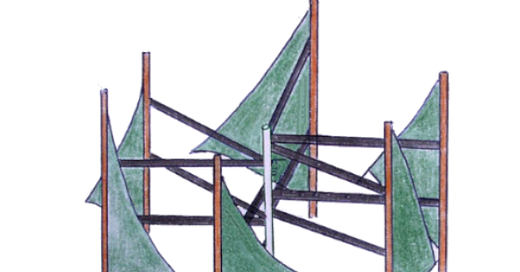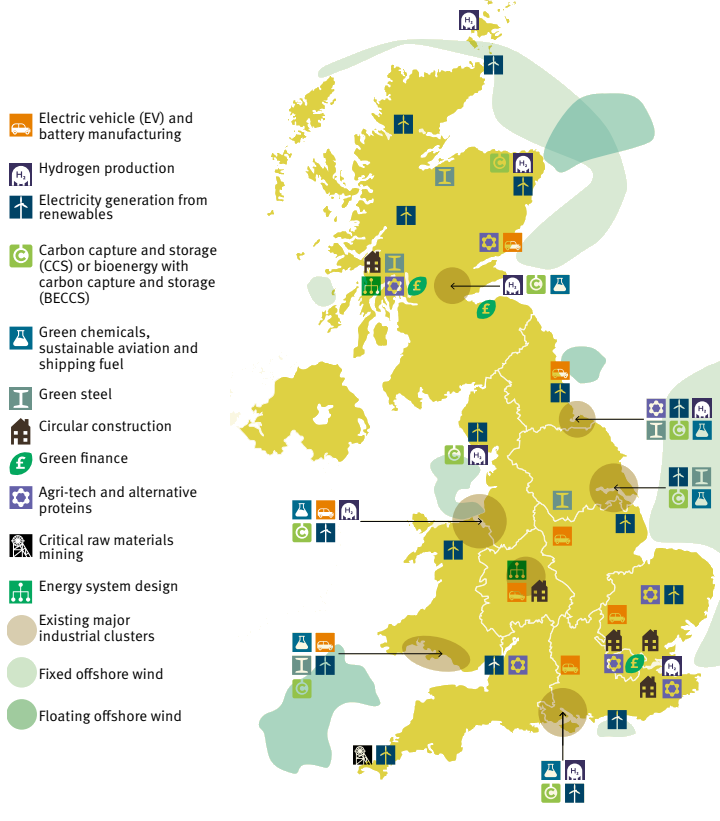No giants, just windmills
This post isn't really about windmills, it's about the Government building green skills properly. But we did find some interesting stuff on windmills along the way.
Reg: Right! The internet, modern medicine, advanced robotics, nanotechnology, space exploration, artificial intelligence, and electric vehicles. But apart from those, what have modern times ever done for us?
Terry: Global connectivity!
Reg: Oh, shut up! The internet, modern medicine, advanced robotics, nanotechnology, space exploration, artificial intelligence, electric vehicles, and global connectivity! I suppose you're going to tell me about renewable energy next?
Xerxes: Well, yeah, actually...
Reg: Oh, just forget it!
Source: TGE, from Monty Python and Michio Taku
How will our times be remembered? Hopefully favourably, although many might disagree. Optimistically – which we try to remain here on The Green Edge – we hope it will be seen as a time of profound innovation and, alongside that, great power for good and evil, in which wisdom eventually prevailed and balance was restored for the future of the planet and all its citizens, human and otherwise.
One thing we shouldn’t be remembered for, though, is the invention of renewable energy. Reg is right on that one.
The Persians built the first windmills, perhaps as early as the 5th century AD but more likely around the 9th century. They were of the panemone design and were first built to pump water and subsequently modified to grind grain. Later, at their peak a few hundred years ago there were something like 200,000 windmills across Europe. The US had 6 million windmills including, since 1854, Daniel Halladay’s first commercially viable Self-Governing Windmill. Don Quixote - whose author Miguel de Cervantes gave us our title for this post - tilted at his windmill around 1612.
Likewise with water power. Two thousand years ago the Han Dynasty was using water power for ore-breaking and papermaking. Even solar to a lesser extent, where the Anasazi peoples of New Mexico in the 13th century moved en bloc to south-facing abodes on cliffs to capture the sun’s warmth during cold winter months.
All good, all renewable power – although back in the day it was probably just called ‘power’.
Then, of course, came the fossil fuel blip. Coal first, and if you have the will and a couple of reading-months to spare, The Prize gives a fascinating and disturbing account of how the oil age came about and continues to dominate our lives.
But, while most of us agree it must be done, what will it take to make a complete return to l’énergie des anciens, albeit with the efficiencies that today’s tech brings? How will we ensure that the future Anthropocene fossil record will reveal a narrow, perhaps somewhat sticky, blackish band corresponding to a tiny period of two hundred years or so during which humans plundered the fossils from layers far, far below, belching them back out into their own layer before seeing the light and leaving higher layers geologically clean and green again?
Today’s keyword is transition. The Net Zero transition, certainly. But today we also see other major transitions going on in interactive, interconnected and, hopefully, complementary ways. The Digital transition, the Automation transition and, here in post-Brexit Britain, a Trade transition. Soon, we’re pretty sure we’re all going to be talking about a Friendly AI transition.
By their very nature, transitions occur at different rates, different scales and in different ways depending on the roles and locations of the transitioners. One of the most affected transitioning groups is the workforce and our question is this: where and to what extent should the State intervene in skilling up the emerging green workforce?
We have no silver-bullet answer, but we do have a few suggestions for where government should be looking for indicators of where and how it should be making its intervention decisions. Certainly, it needs to properly understand the web of transitions and steer them. But many might argue that a return to big State government – trending that way before 2020 and accelerated by the pandemic – leads to too much being dictated centrally and without due consideration of all the indicators available. So, here’s our fiver’s worth (prices having gone up so much recently)…
The Higher Education (HE) Indicator
Universities respond quickly to changes in student interests through the development of new research areas and, to an increasing amount, student employability. We see many new degrees incorporating or focusing on developing green, sustainable and net zero capabilities.
While we see this trend both at the bachelor and postgraduate levels, the higher levels are, historically, decent indicators of what we might expect lower down the qualifications hierarchies (say, levels 2 thru 5).
Investment Trends
Investment trends can be readily tracked: where it’s happening, how much is going in, splits between private equity and venture capital, and so on. From a workforce point of view there’s the more granular data on investment in subsectors, like those that may influence trends in careers for construction.
Patent and Green Technology Patterns
Image: Hanna-Barbera
The race for technology leadership is often tracked by measuring numbers and rates of commercialisation of patents by countries, sectors, and businesses. It’s also a leading indicator of developing skills demand and content.
Along with patents, green technologies can be slotted into broad categories: process based, product based, service based and so on. Each category has a distinct form of skills requirement and often an indirect set of skills too.
Green Supply Chains
Mappings of green technology supply chains provide useful indicators of their resilience and ability to adapt to change. We see examples of this in the Offshore Wind Industry, where the dominant companies ‘own’ their whole supply chains. In other supply chains, perhaps those with large reliance on multiple small companies with varying financial strengths, supply chains may be less resilient and more in need of central coordination, leadership and priming of the metaphorical pumps.
Not so much of a skills indicator, perhaps, but one worth mentioning all the same.
Rates of Skills Churn
In every occupation, skills and tasks change at greater or lesser rates. Depending on which dataset we’re looking at1 we can track knowledge and skills in terms of half-lives. Some occupations may have fast rates of change incorporating brand new or emerging skills; others may be soaking up well-established skills from other occupations. It’s all worth tracking.
The Importance of Place
Labour markets vary in their scale and make up, and this greatly impacts both skills development opportunities and the ability to pool demand. The former relates to the number of work placements, internships and so on, while the latter relates to the educational hinterlands. In large urban areas a single college or university can pool supply and run financially viable courses. On the other hand, in more rural areas or those dominated by relatively small free-standing towns geography becomes a barrier to cost effective provision, even though per capita levels of demand for certain skills might be comparable to, say, big conurbations.
A good example of this right now is deep retrofit skills. But others will emerge as the Net Zero transition progresses, particularly if we move towards a national net zero industrial and service cluster model like the one that being proposed by the Green Alliance:
Potential net zero industrial and service clusters. Image: Green Alliance.
And here’s another question we’re asking. Looking to the future, might a key solution for adapting to the various transitions – the Net Zero and Digital ones in particular – be to build core education and training programmes focused on those transitions, on to which other more specific skills can be added for specific occupations or sectors?
Are we getting closer to the point, for example, where engineering apprenticeships will start with a core of sustainability and digitality, and then dendritically add more specific skills, like engineering design, pipefitting, and welding? A little like starting with the fundamentals of the Trivium and Quadrivium of old and then branching out more towards polymathy.
And finally, will geologists and palaeontologists of the distant future – human, humanoid or perhaps from some new species – conclude that Fossil Fuel Man did indeed succeed in greening up the Anthropocene layer of the earth’s crust?
Those of us alive today will never know, but – as we said – The Green Edge remains optimistic.
O*NET, ESCO, LinkedIn, OVATE, Ofqual etc.










Green efforts need to be sustainable, I think--and that means that they need to be so worth pursuing that people will pursue them without coercion. Stewardship of our planet includes deriving good from all our planet has to offer, while respecting and being responsible for its ongoing well-being. Good to keep in touch with others who are like-minded.